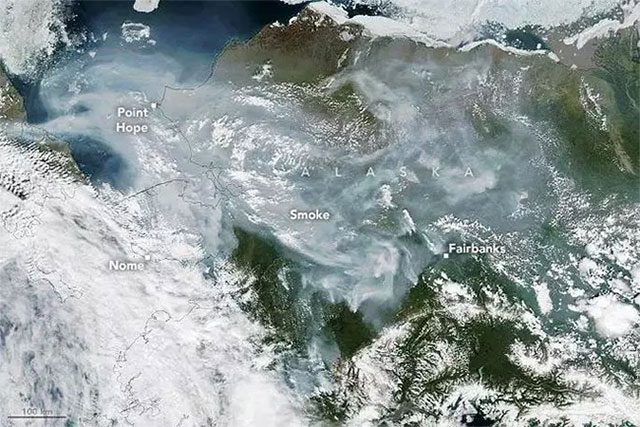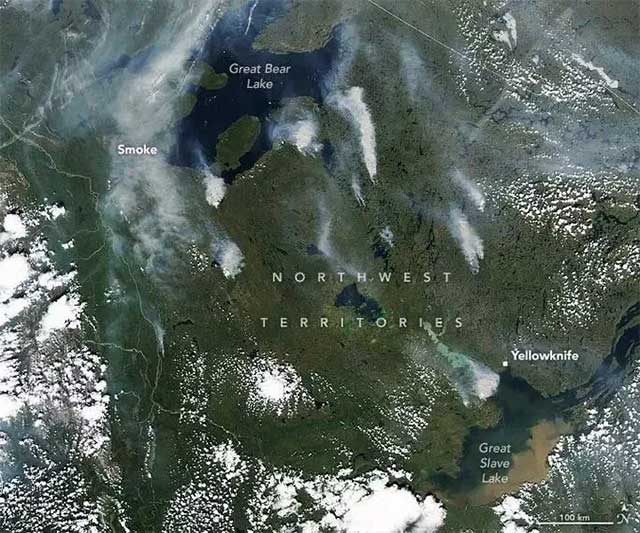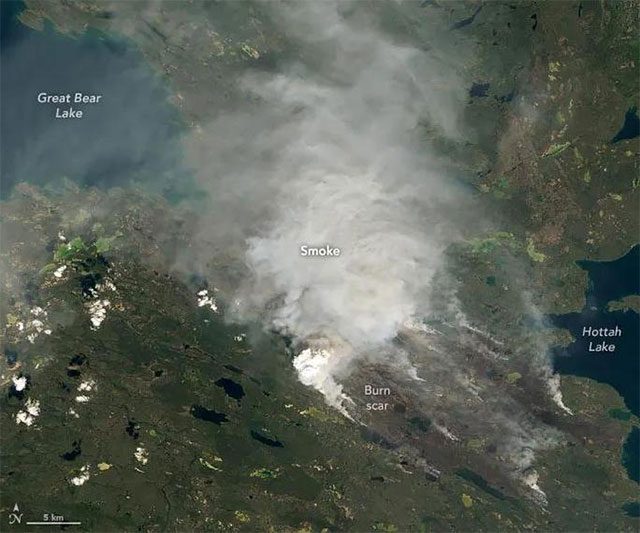According to SciTech Daily, instead of experiencing a short and mild summer with a hint of greenery, the land near the northernmost point of the United States – Alaska – is literally “on fire.”
Images from the VIIRS infrared observation device on NASA and NOAA’s Suomi NPP satellite show thick black-gray smoke filling the skies over Alaska, spreading across a vast area, even obscuring regions still covered by permafrost.

Alaska’s sky changing color – (Photo: NASA/NOAA)
This is wildfire smoke. Wildfires have emerged in Alaska since June, and as of July 1, an extremely intense fire has spread across southern and interior regions; meanwhile, strong Southeast monsoon winds are pushing the smoke deep into the northern areas.
The largest plume of smoke is coming from a fire northwest of Iliamna Lake, which, according to climatologist Rick Thoman from the University of Alaska in Fairbanks, has reached extremely high particulate matter levels, casting a shadow over the city of Nome.
According to the Alaska Interagency Coordination Center and the National Interagency Fire Center, there are up to… 210 active fires across the state, including 42 major blazes.
On the other side of the northern pole, Canada is facing a similar situation. Recent images from the MODIS device on NASA’s Aqua satellite show dense smoke rising from some of the largest fires, spreading strongly over the Beaufort Sea and parts of the Arctic in Canada. Many communities in the Northwest are suffering from extremely poor air quality.

A similar disaster in Canada, captured by Aqua satellite – (Photo: NASA).
Another image from the OLI device on NASA’s Landsat 8 satellite also recorded the devastation near Great Bear Lake in the deep forest, showing not only the smoke’s color but also the brown-gray of the burnt forest areas.

Another area captured by Landsat 8 satellite – (Photo: NASA)
All of this disaster chain enveloping the Arctic and surrounding areas is attributed to climate change causing a series of effects: record high temperatures, drought, coupled with hot air being pushed up from high latitudes by unusual air currents. Therefore, the Arctic is not only suffering from melting ice but is also ablaze.





















































